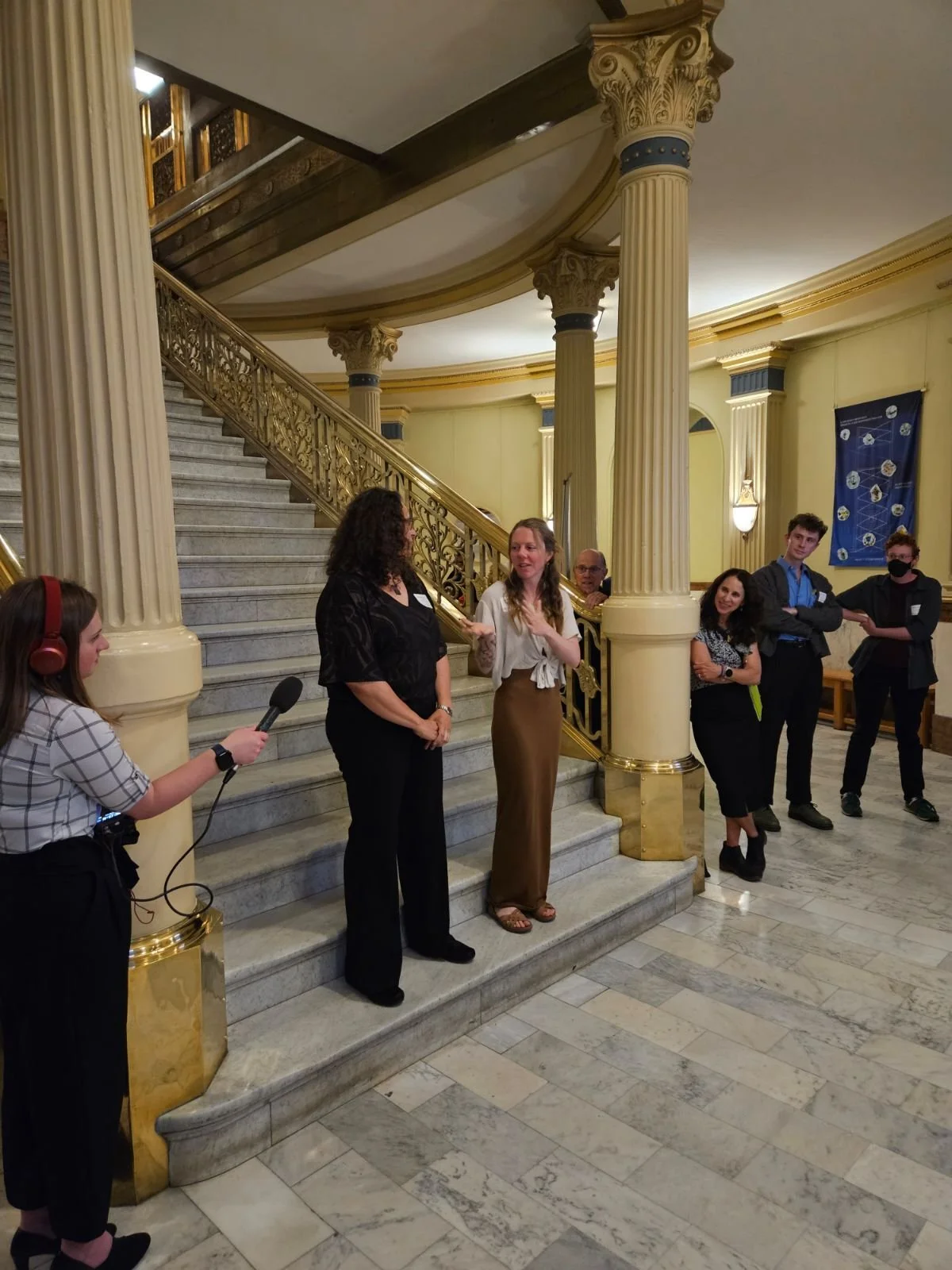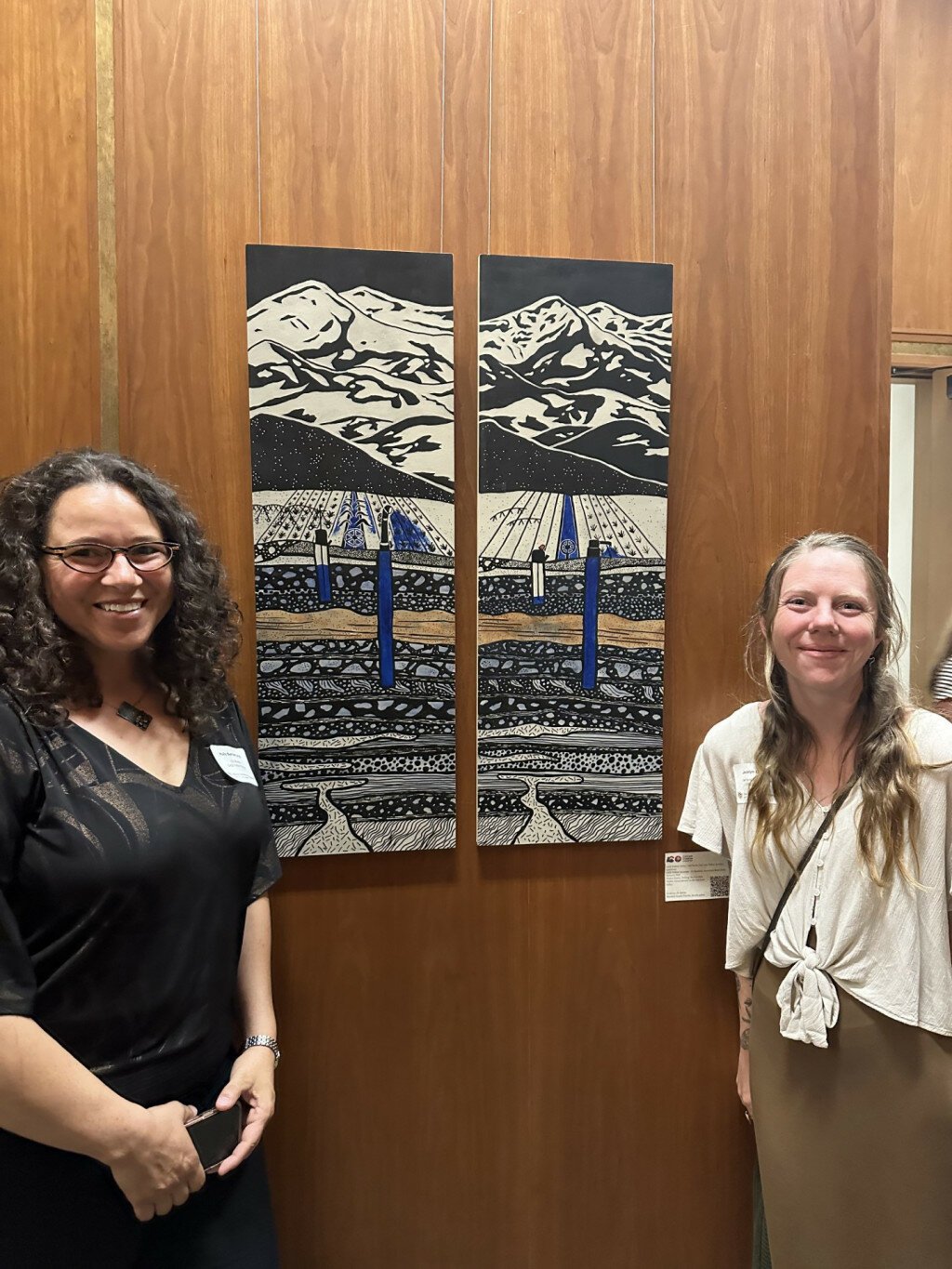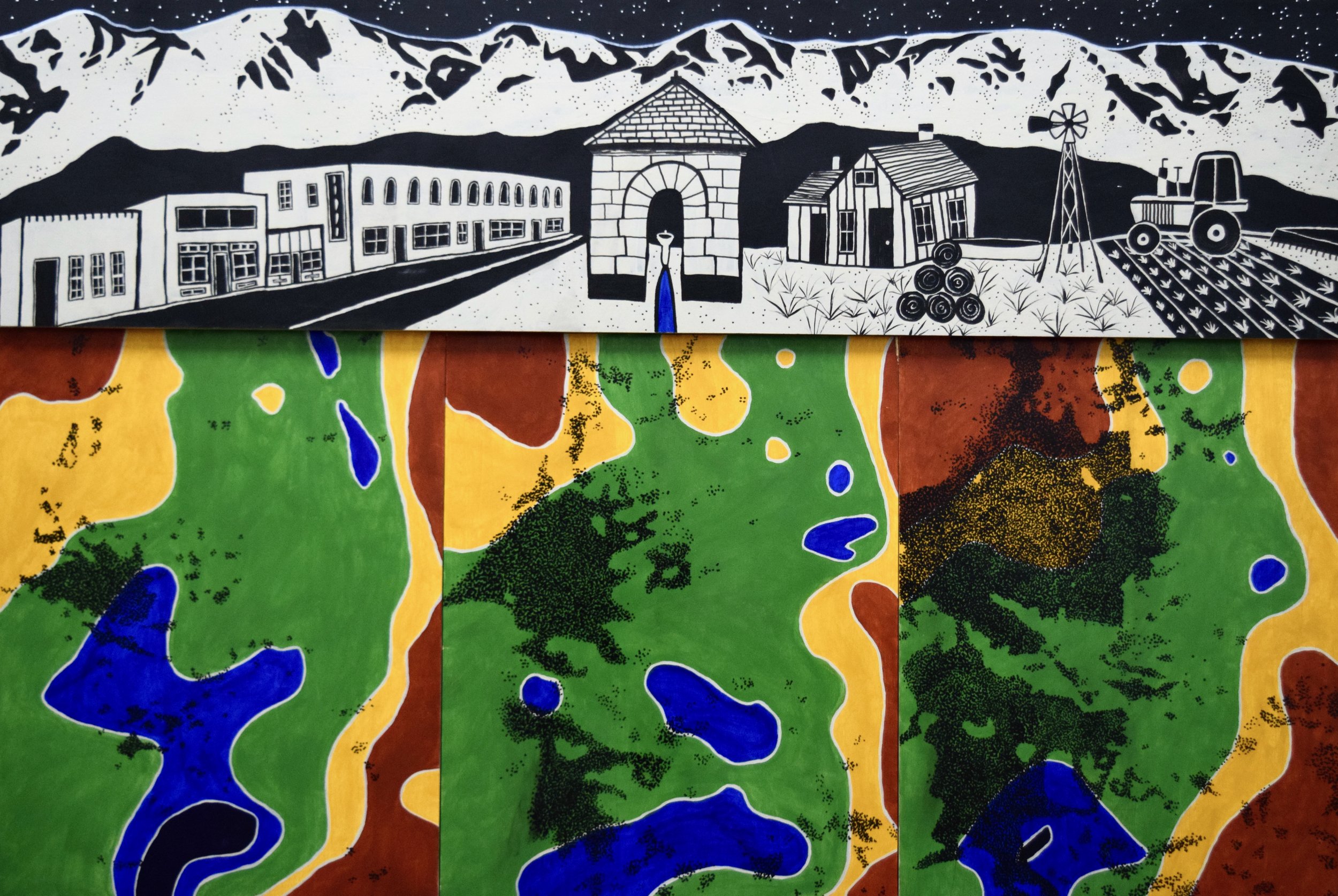








Making the Invisible Visible: Groundwater in the San Luis Valley
Completed in 2024, this collaborative project used art as a tool to visualize and communicate the complexities of groundwater in the San Luis Valley, an arid region deeply shaped by water scarcity, agriculture, and ecological change. Created through the Colorado Art + Science + Environment (CASE) Fellowship, the work emerged from a partnership with Dr. Holly Barnard and was informed by conversations with farmers, scientists, water managers, and local residents.
Groundwater in the San Luis Valley is both a vital resource and an invisible force—powering agriculture, sustaining wetlands, and shaping community life, yet often overlooked in public dialogue. This project aimed to bring that buried story to the surface.
Over the course of a year, I created a series of large, mixed-media paintings that wove together scientific data, field observations, and local knowledge. The artworks depict real places across the Valley, integrating maps, geologic cross-sections, native plant forms, and visualizations of aquifer dynamics. Data sets such as snowpack, Rio Grande flow levels, groundwater pumping, and aquifer storage are embedded within the artwork, chosen through dialogue with community collaborators and scientific partners.
The result is a visual record of place-based water knowledge that reflects the complexity of groundwater challenges as both environmental and cultural. It explores how changes in snowmelt, land use, and climate intersect with the lived experiences of rural communities, and how science and story can come together to make the invisible visible.
The paintings traveled as part of the Coloradans and Our Shared Environment in Times of Challenge and Change exhibition (2023–2025), with stops at:
Colorado State Capitol Building – Denver, CO
Breck Create – Breckenridge, CO
University of Colorado’s Museum of Natural History – Boulder, CO
Mesa County Libraries – Grand Junction, CO
Center of Southwest Studies – Durango, CO
This project is now permanently installed at the Rio Grande Water Conservation District in Alamosa, Colorado.
